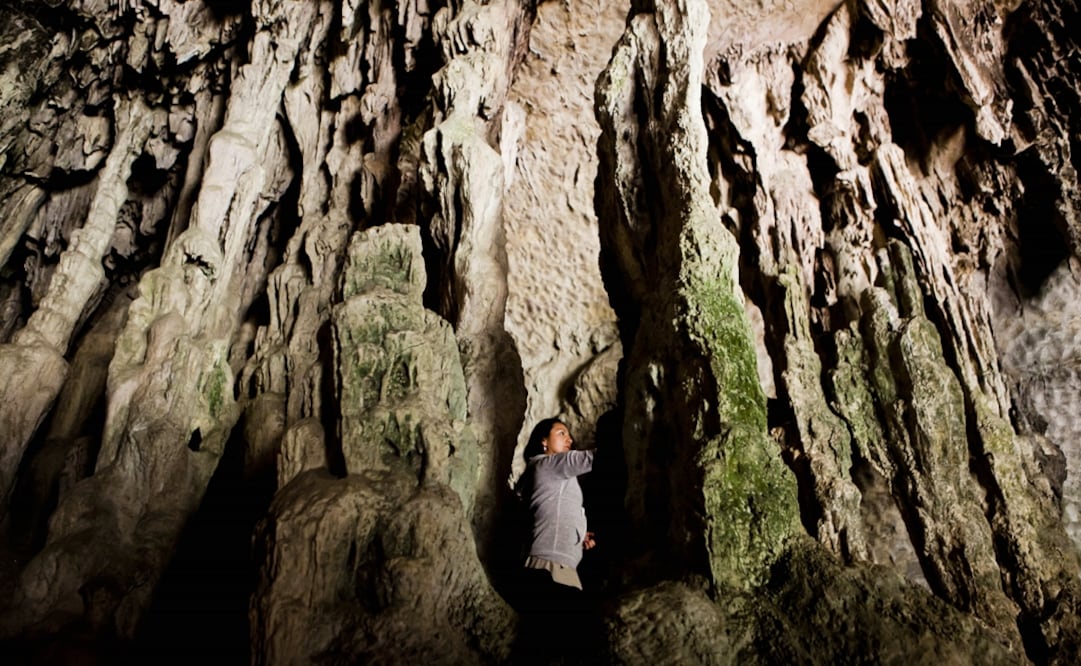Más Información

Detienen y vinculan a proceso Alejandro Baruc “N” en Uruapan, Michoacán; podría estar relacionado con el asesinato de Carlos Manzo

Anticorrupción sanciona a tres empresas por proporcionar información falsa; les impide tener contratos con el Gobierno

Tren Interoceánico: Sheinbaum asegura que habrá reparación integral del daño a víctimas; avanza FGR con investigación

Accidente del Tren Interoceánico deja a Doña Jovita sin dos hijas y un yerno; "querían ir a conocer y pasear", menciona
The Huautla cave system in the Mexican state of Oaxaca is 5,118 feet deep, 53 miles long, and has 26 entrances yet discovered . It is part an ancient story about what the locals call “the deer men.” However, it is not a tourist destination. While its passageways offer all sorts of secrets, gigantic halls –one of them is even larger than the Azteca soccer stadium in Mexico City–, and biodiversity, in the exterior, it is still a central figure in folklore.
According to specialists, the potential of investigations in the interior of the cave system is quite promising, not only from a historic or scientific standpoint, but for the benefit of local communities. The cave system could help preserve their natural resources and add to their drinkable water supply.
The first group of speleologists arrived at the site in the Magical Village of Huautla de Jiménez in 1965. They were from Austin, Texas . Ever since, scientists from all over the world have traveled to the region, working to connect what is now known as the largest cave system in Latin America.
The Speleology Project of the Huautla System (PESH) is currently in charge of exploration at the caves. Since 2014, the organization conducts annual one-month expeditions in the region in order to keep finding new entrances and connections that allow to better describe the natural treasure.
The project is led by American speleologist Bill Steele , who arrived in the La Cañada municipality for the first time in 1977 , and who has not only adapted to life in the cave system, but also to its people, whom he politely greets every day in their Mazatec language.
“I first entered the cave at the age of four and thought it was magnificent […] Huautla is an amazing system and I would very much like to share what we have found in it with the locals, many of which have become my friends,” he stated.
The region of La Cañada stands in the middle of the mountain range. In Huautla, the caves and openings are part of the landscape and are found pretty much everywhere.
According to the world view of the Mazatec people , the ancient god Chicón Nindó guards the underground spaces. Some extraordinary stories are told in the interior of the caverns: It is said that a group of men once lost their spirit for entering the caves without permission, while other stories tell that some made a fortune after making a deal with the cave lord.
The caves are considered to be a sacred place. In order to enter, people must ask for permission and they are not allowed to touch or take anything away.
In its interior, the Huautla system sustains all sorts of life forms. Crossed by an underground river that flows into the Papaloapán water basin, it is home to more than 40 species of endemic fauna.
According to the specialist, around 48 species of fauna have been discovered in the interior of the Huautla system, out of which 11 are cave dwellers .
dm
Noticias según tus intereses
[Publicidad]
[Publicidad]











